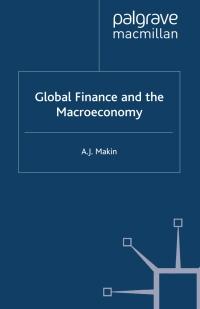Question
1. WestGas Conveyance, Inc., is a large U.S. natural gas pipeline company that wants to raise $120 million to finance expansion. WestGas wants a capital
1. WestGas Conveyance, Inc., is a large U.S. natural gas pipeline company that wants to raise $120 million to finance expansion.
WestGas wants a capital structure that is 50% debt and 50% equity. Its corporate combined federal and state income tax rate is 40%.
WestGas finds that it can finance in the domestic U.S. capital market at the rates listed below. Both debt and equity would have to be
sold in multiples of $20 million, and these cost figures show the component costs, each, of debt and equity if raised half by equity and half by debt.
US Capital Market Costs:
| Amount of Capital Raised | Cost of Equity | Cost of Debt |
| Up to $40 million of New Capital | 12% | 8% |
| $41 million to $80 million of New Capital | 18% | 12% |
| Above $80 million | 22% | 16% |
A London bank advises WestGas that U.S. dollars could be raised in Europe at the following costs, also in
multiples of $20 million, while maintaining the 50/50 capital structure.
European capital market Costs:
| Amount of Capital Raised | Cost of Equity | Cost of Debt |
| Up to $40 million of New Capital | 14% | 6% |
| $41 million to $80 million of New Capital | 16% | 10% |
| Above $80 million | 24% | 18% |
Each increment of cost would be influenced by the total amount of capital raised. That is, if WestGas first borrowed $20 million in
the European market at 6% and matched this with an additional $20 million of equity, additional debt beyond this
amount would cost 12% in the United States and 10% in Europe. The same relationship holds for equity financing.
- Calculate the lowest average cost of capital for each increment of $40 million of new capital, where WestGas raises $20 million in
the equity market and an additional $20 million in the debt market at the same time.
- If WestGas pans an expansion of only $60 million, how should that expansion be financed? What will be the weighted average cost
of capital for the expansion?
- The Union Computer Export Company has considered a variety of projects, but all of its business is still in the
United Kingdom. Since most of its business comes from exporting super computers (denominated in sterling),
it remains exposed to exchange rate risk. On the favorable side, the British demand for computers has risen consistently
every year. John Johnson, the owner of the firm, has retained about $10,000,000 (after the sterling was converted
into dollars) in earnings since he began his business. At this point in time, his capital structure is mostly his own
equity, with very little debt. John has periodically considered establishing a subsidiary in the United Kingdom to
produce computers there (so that he would not have to export them from the United States).
If he does establish this subsidiary, he has several options for capital structure that would be used to
support it: (1) use all of his equity to invest in the firm, (2) use sterling denominated long-term debt,
or (3) use dollar denominated long-term debt. The interest rate on British long-term debt is slightly higher
than the interest rate on US long-term debt.
- What is the advantage of using equity to support the subsidiary? What is a disadvantage?
- If John decides to use long-term debt as the primary form of capital to support the subsidiary,
should he use dollar-denominated debt or sterling denominated debt?
- How can the equity proportions of this firm's capital structure increase over time after it is established?
Step by Step Solution
There are 3 Steps involved in it
Step: 1

Get Instant Access to Expert-Tailored Solutions
See step-by-step solutions with expert insights and AI powered tools for academic success
Step: 2

Step: 3

Ace Your Homework with AI
Get the answers you need in no time with our AI-driven, step-by-step assistance
Get Started


